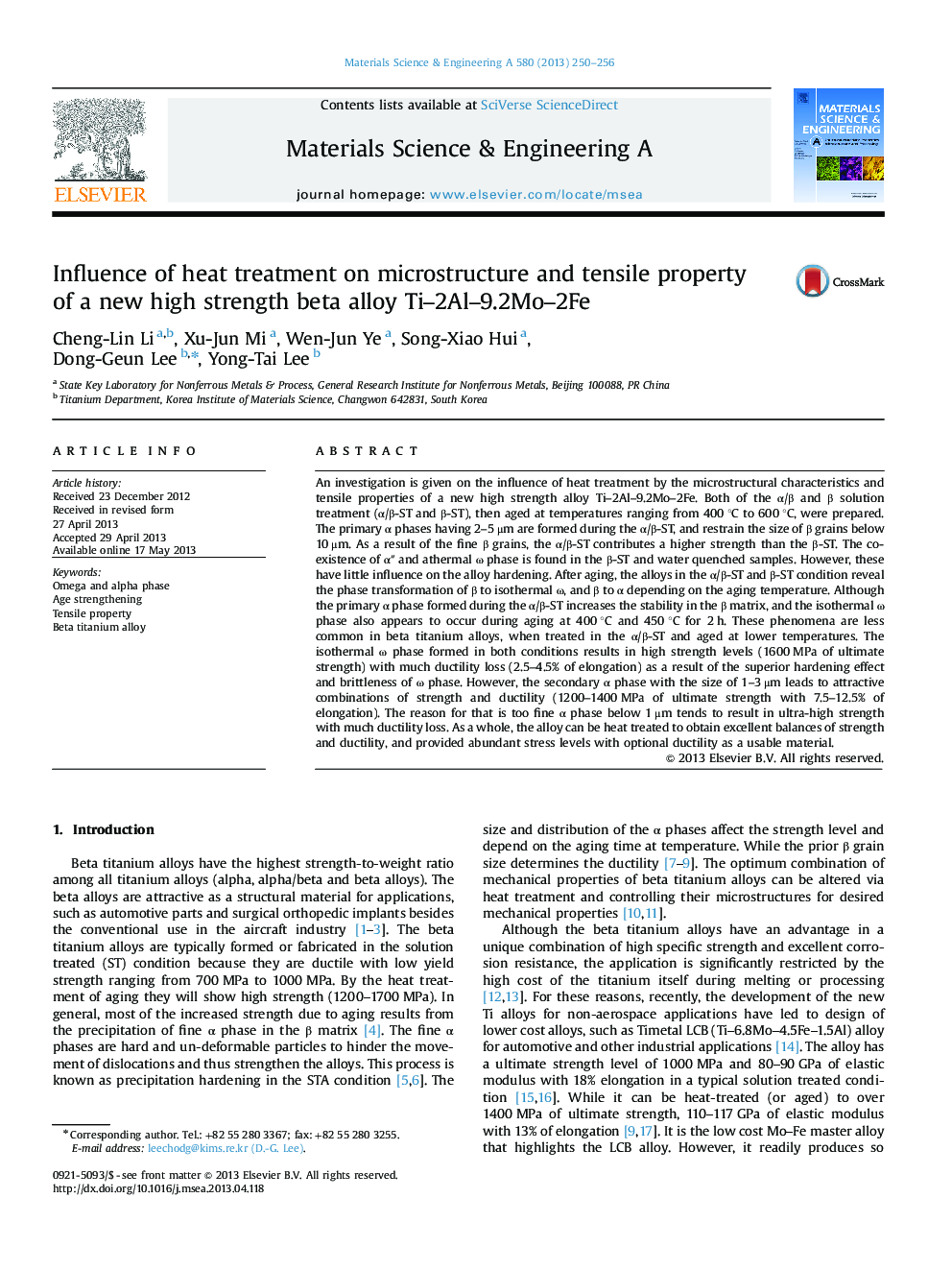| کد مقاله | کد نشریه | سال انتشار | مقاله انگلیسی | نسخه تمام متن |
|---|---|---|---|---|
| 1575858 | 1514763 | 2013 | 7 صفحه PDF | دانلود رایگان |

An investigation is given on the influence of heat treatment by the microstructural characteristics and tensile properties of a new high strength alloy Ti–2Al–9.2Mo–2Fe. Both of the α/β and β solution treatment (α/β-ST and β-ST), then aged at temperatures ranging from 400 °C to 600 °C, were prepared. The primary α phases having 2–5 μm are formed during the α/β-ST, and restrain the size of β grains below 10 μm. As a result of the fine β grains, the α/β-ST contributes a higher strength than the β-ST. The co-existence of α″ and athermal ω phase is found in the β-ST and water quenched samples. However, these have little influence on the alloy hardening. After aging, the alloys in the α/β-ST and β-ST condition reveal the phase transformation of β to isothermal ω, and β to α depending on the aging temperature. Although the primary α phase formed during the α/β-ST increases the stability in the β matrix, and the isothermal ω phase also appears to occur during aging at 400 °C and 450 °C for 2 h. These phenomena are less common in beta titanium alloys, when treated in the α/β-ST and aged at lower temperatures. The isothermal ω phase formed in both conditions results in high strength levels (1600 MPa of ultimate strength) with much ductility loss (2.5–4.5% of elongation) as a result of the superior hardening effect and brittleness of ω phase. However, the secondary α phase with the size of 1–3 μm leads to attractive combinations of strength and ductility (1200–1400 MPa of ultimate strength with 7.5–12.5% of elongation). The reason for that is too fine α phase below 1 μm tends to result in ultra-high strength with much ductility loss. As a whole, the alloy can be heat treated to obtain excellent balances of strength and ductility, and provided abundant stress levels with optional ductility as a usable material.
Journal: Materials Science and Engineering: A - Volume 580, 15 September 2013, Pages 250–256